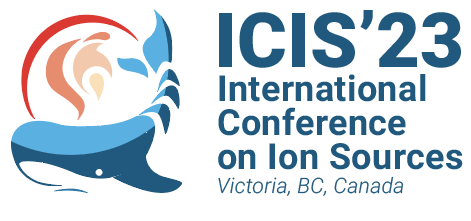Speaker
Description
Neutral beam system for heating & current drive (HNB) of ITER requires high power beams of 0.87 MeV and 46 A (230 Am-2) hydrogen negative ion (H-) for 1000 s, and of 1 MeV and 40 A (200 Am-2) deuterium negative ion (D-) for 3600 s. The H- ion beam demonstration toward 0.87 MeV and 230 A/m2 for 300 s, where the beam duration exceeds 50 s required in the initial HNB operation, is under progress in a Megavolt Test Facility (MTF: 1 MV, 0.5 A). The beam source consists of cesium seeded and filamented arc driven ion source and five-stage accelerator. To obtain suitable cesium distribution in the ion source for the stable negative ion production for 300 s, the wall temperature was kept < 60 ℃ by adding heat sink around the wall. A compressed air-cooled plasma grid (PG) was newly developed to control the PG temperature within 200-300 ℃ since it was limited around 200 ℃ in the conventional refrigerant of hot water or oil. To protect the filament from the damage due to serge energy at arcing, fast cut-off system of an arc power supply was developed. As for the accelerator, the interval of apertures and the gap distance were adjusted to be the same as the ITER accelerator even the number of the aperture is only nine due to the MTF’s capability. The amount of the aperture displacement of a steering grid and the shape of so-called kerb were tuned with a three-dimensional beam trajectory calculations in order to compensate the beamlet deflections by the magnetic field produced by electron deflection magnets and the beamlet-beamlet interaction, respectively. As the results of these modifications, the negative ion beams with the ITER relevant perveance have been successfully achieved for 300 s at 300 keV, 100 s at 500 keV and 10 s at 750 keV. The grid heat load was suppressed below the target value for long pulse operations. The beam energy and the pulse are now increased by increasing the negative ion current to maintain the perveance matched condition.
| Email Address | kisaki.masashi@qst.go.jp |
|---|---|
| I have read the Code of Conduct to attend ICIS2023. | Yes |

